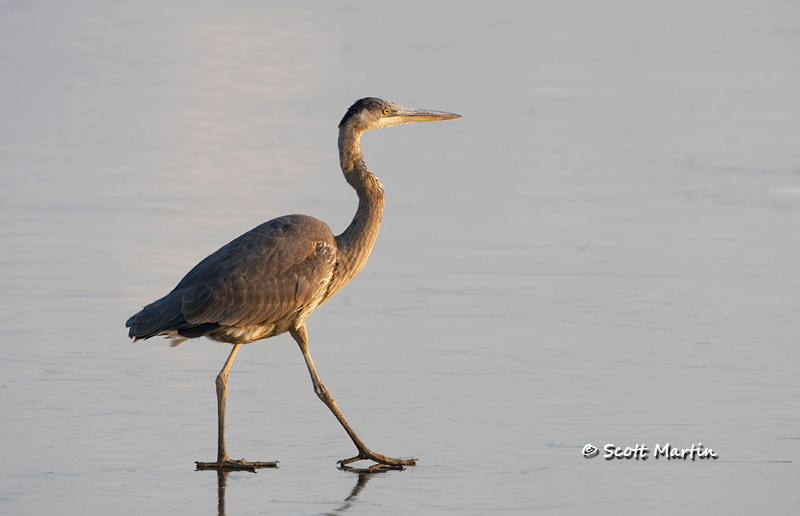
by Scott Martin Photography | Dec 28, 2010 | Blog, Shore Birds & Waterfowl
I trust you have had a wonderful Christmas Season and are looking forward to an exciting New Year. It’s hard to believe 2011 is upon us…..where has the time gone? It seems like yesterday we were all in a flap over Y2K!
From a birding point of view winter is a great time to be out with a camera as there are birds around that we can’t see any other time of the year. The Great Gray, Snowy and Northern Hawk Owls may be seen not too far from Oshawa and plenty of winter ducks & gulls can be seen along the shores of Lake Ontario.
The Great Blue Heron is not a bird normally seen after the weather cools and the ponds start freezing over as it makes hunting for their favourite food, which is fish, very difficult so they are forced to turn to small animals such as mice, voles and chipmunks. By this time of year most Herons have found their winter homes in Florida!
Here is a local straggler (taken at the Lynde Shores Conservation Area) gingerly walking on the ice looking for an opening to fish.

.
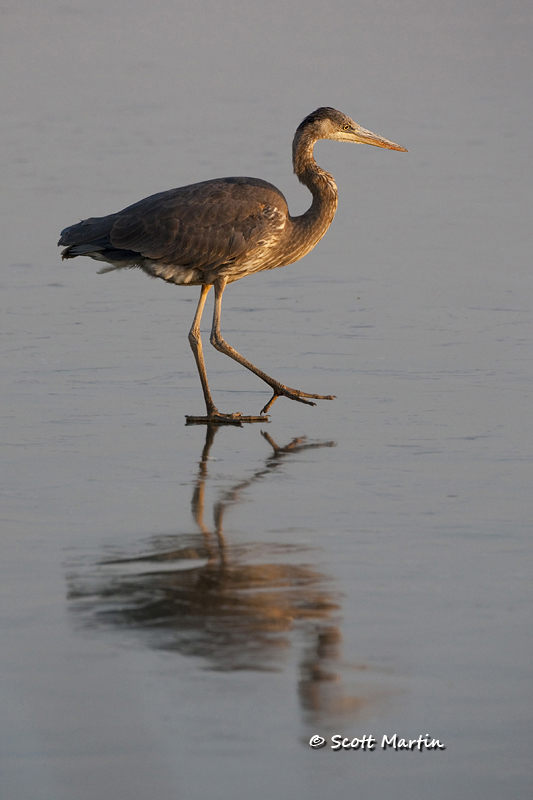
.
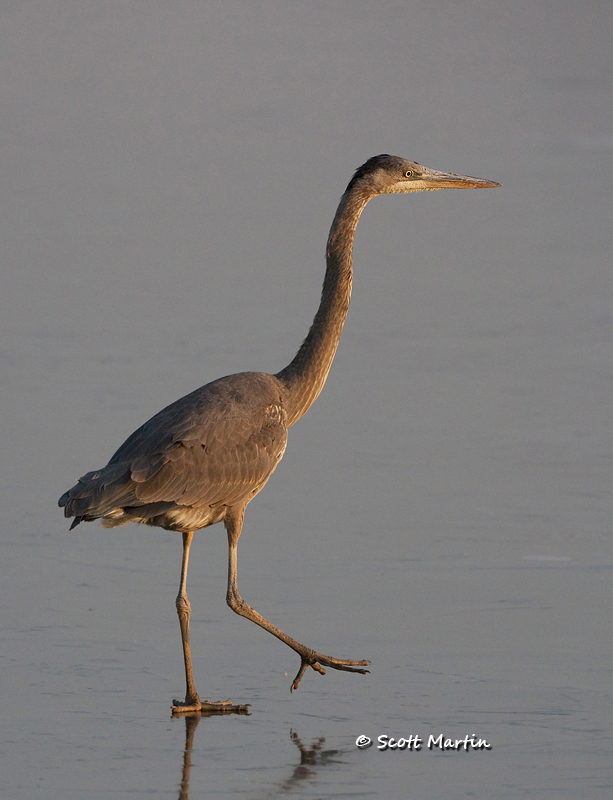
Great Blue Herons are the largest North American Heron, and prefer wetlands, marshes & ponds to live in however they are also very popular around fisheries in the south which was originally thought to be a big problem for fish farmers. Interestingly, studies have shown that the Herons typically eat the sickly fish that swim near the surface and would not have been productive anyway. So the Great Blue Herons actually do the fish farmer a favour. Herons normally eat fairly small fish (as shown below), however they refuse to throw away any big catches they make and have actually been known to choke to death trying to swallow a large fish.
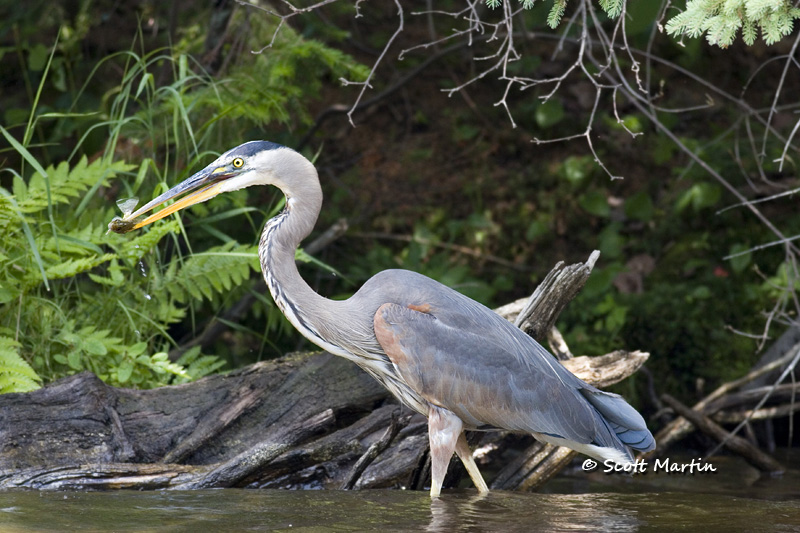
Great Blue Herons usually nest in large groups called Rookeries, or if exclusively Herons, Heronries. They breed annually and the female lays two or three eggs having a gestation time of about 28 days. Adult Herons feed their young regurgitated fish and when adults are feeding their young they ingest at least four times as much food as normal. Herons often pair for life and during breeding season they spend most of their time working on the nests and feeding the young ones.
Here is a nesting pair taken this past spring in Florida.
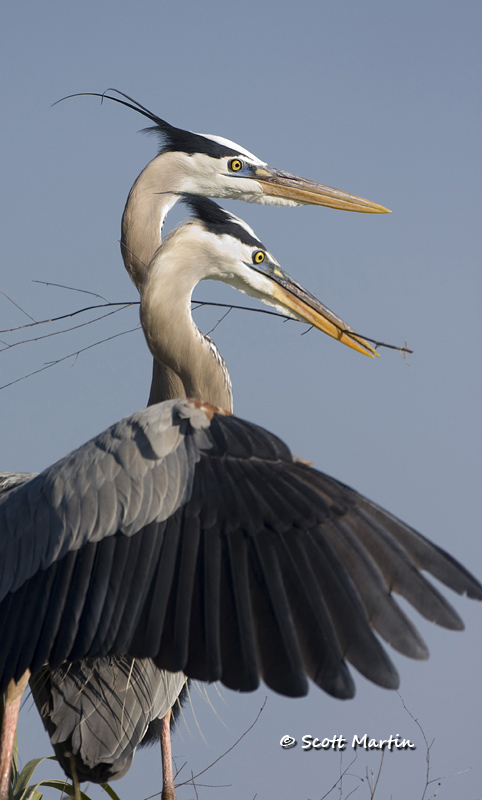
And a proud parent!
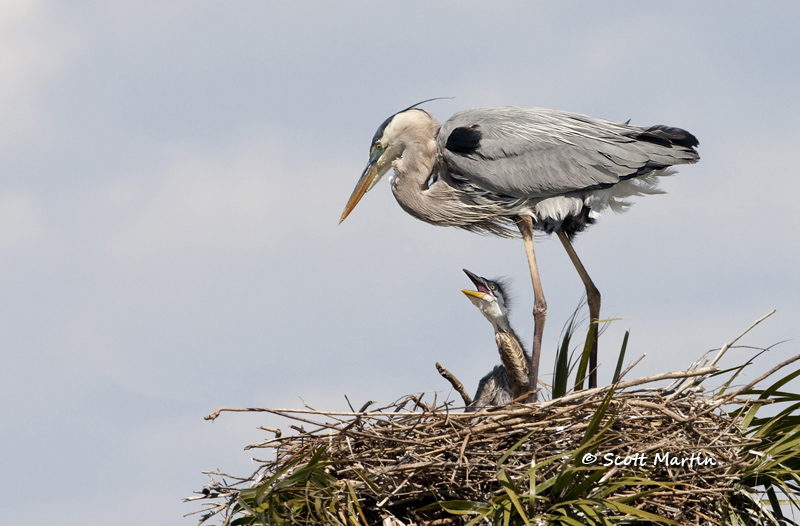
And finally an in flight shot, which is surprisingly easy to take as the Herons are slow fliers and often cruise along close to the water providing a nice pose. This portrait was taken standing at the end of our dock at the cottage and the Heron was actually below the level of the camera at a distance of about twenty feet.
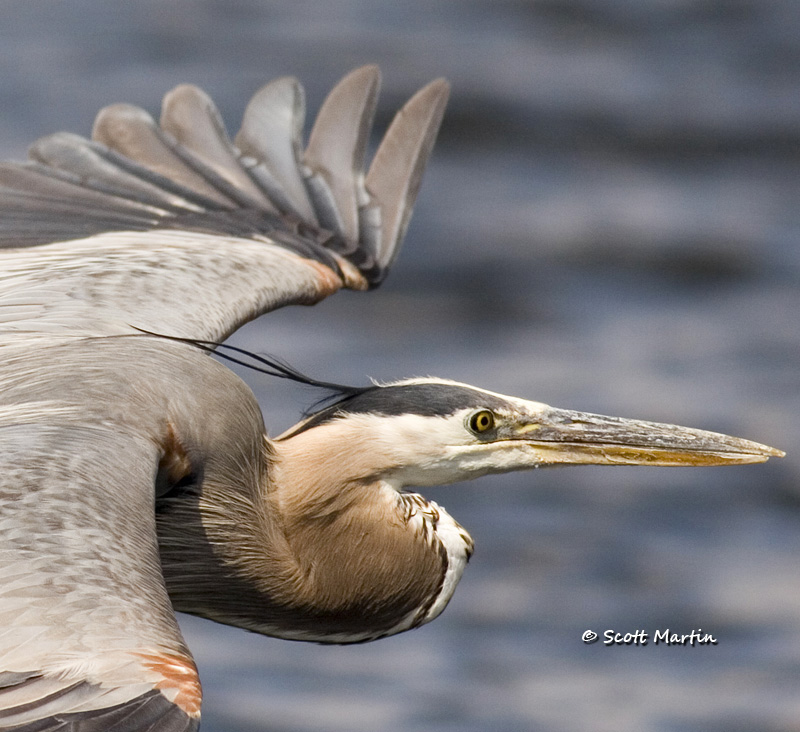
More images of Great Blue Herons can be seen in the “Wading & Shore Birds” gallery.
Happy New Year to everyone and hopefully the winter duck & owls posts will show up early in the new year!
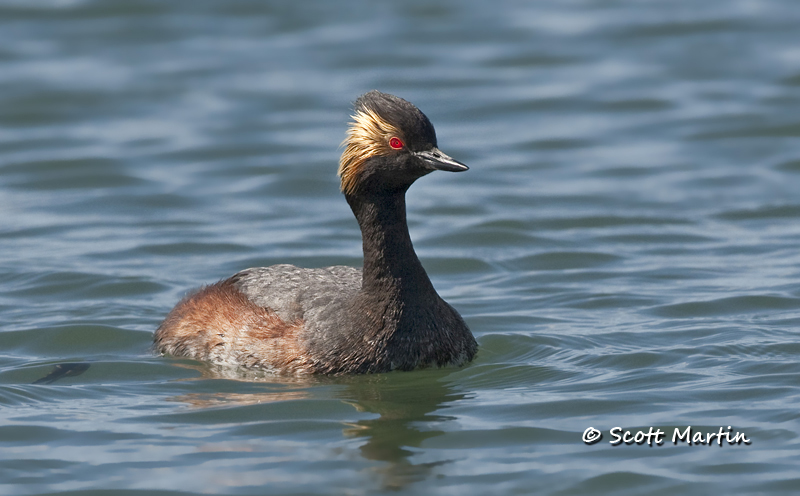
by Scott Martin Photography | Dec 11, 2010 | Blog
The Eared Grebe is the most abundant Grebe in the world, however a very rare visitor to Ontario as it normally lives on the west coast and winters in the southwestern United States and Mexico. The Grebe pictured below showed up this summer at the Cobourg Harbour where it stayed for a number of weeks and became somewhat of a local celebrity with birders and photographers from all over the province heading to Cobourg to see him.
The Eared Grebe is a beautiful bird that is about the same size or perhaps a little smaller than a duck and it feeds on aquatic insects, small crustaceans and fish. It is an accomplished diver and underwater swimmer.

.
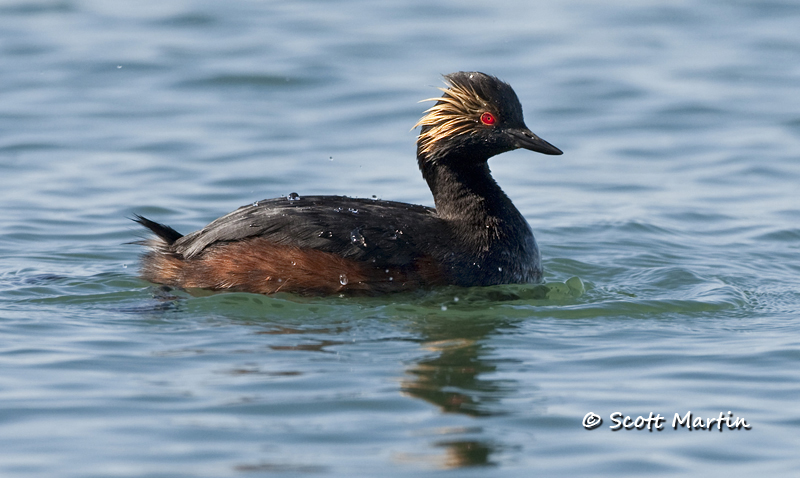
.
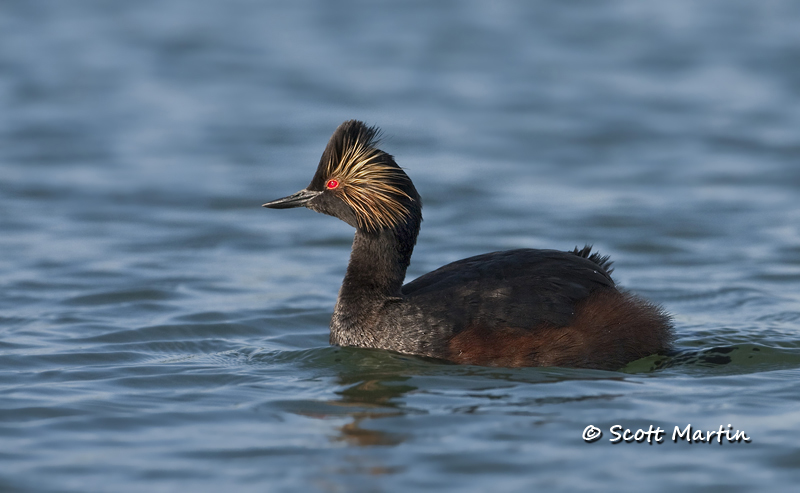
One of the most amazing facts regarding Eared Grebes is that they are mostly flightless, unable to fly for about ten months each year. They only fly in order to migrate, so for a month each spring and fall they take to the air. The process of migration takes so much energy and causes so much weight loss that than upon completion of migration they are exhausted and emaciated to the point they can no longer fly and must start the slow process of eating enough to increase weight and muscle mass to be ready for the next migration. The Eared Grebe spends more time unable to fly than any other migratory bird in the world.
They can however scoot across the water and take on a menacing look if they need to defend their territory as shown below.
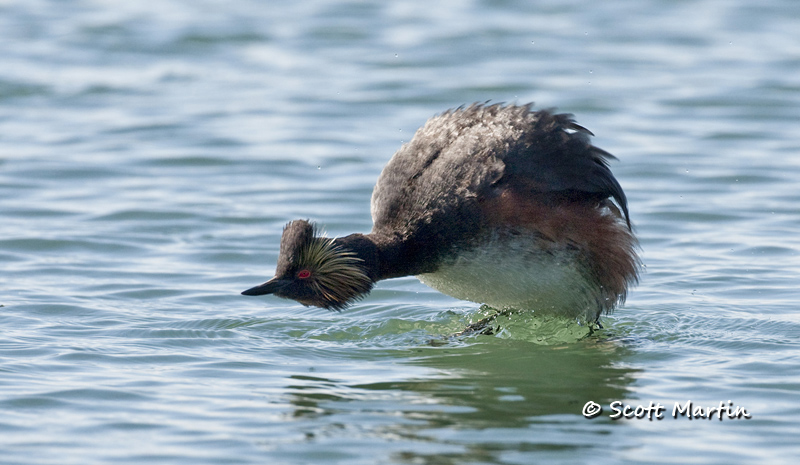
Perfect landing.
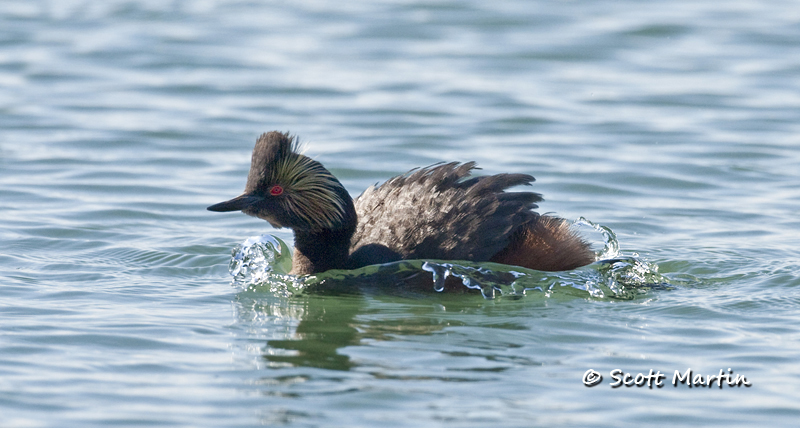
Like us sometimes Grebes bite off more than they can chew and I was fortunate to be able to catch this interchange between bird & fish. Eventually the Grebe literally tossed this fish away….apparently some fish have nine lives too.
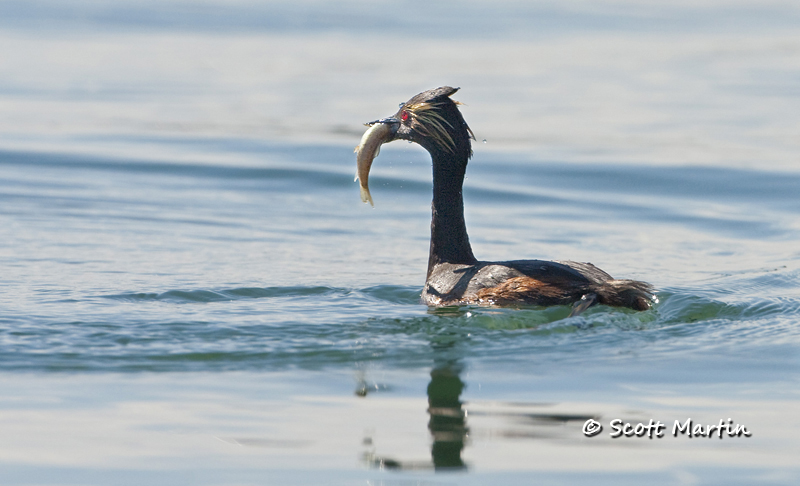
.
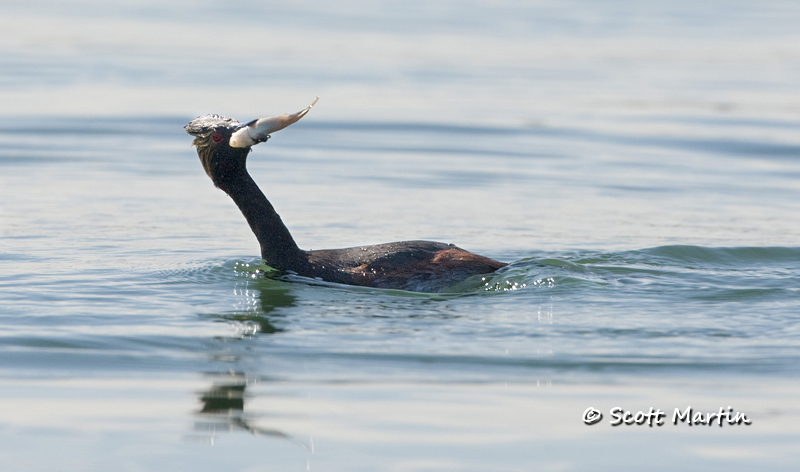
.
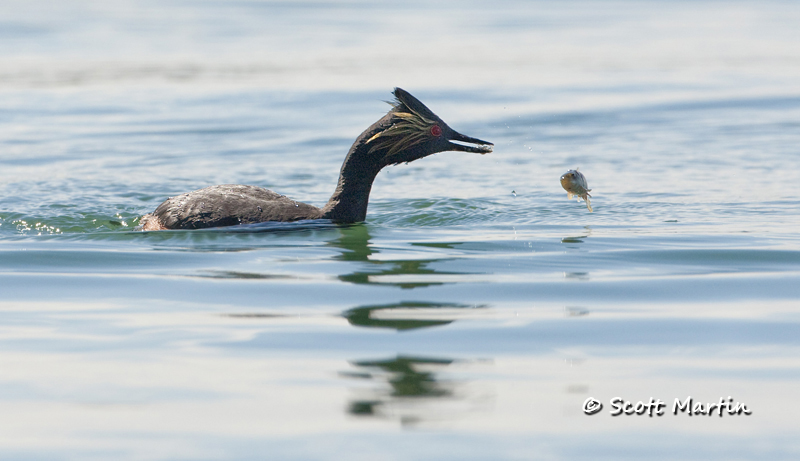
More images of the Eared Grebe can be seen in the Loons & Grebes Gallery
All of these shots were taken hand-held with a 500mm lens sitting on a rock as close to the water level as possible.
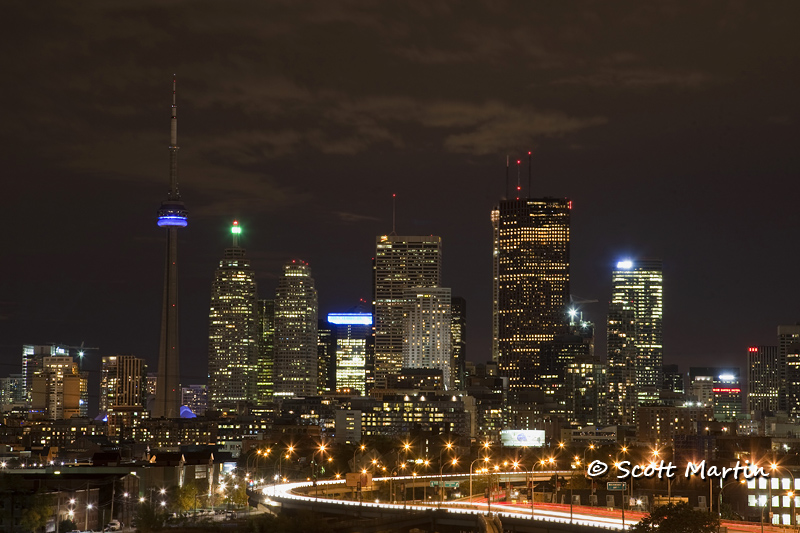
by Scott Martin Photography | Dec 5, 2010 | Blog, Cityscapes, Landscapes
October 2, 2010 marked the date for the fifth Nuit Blanche dusk to dawn contemporary art event. The event is held on the weekend before the Canadian Thanksgiving Weekend and has been growing each year since its inception in 2006 with more than a million people this year enjoying the exhibitions setup in various zones throughout the Toronto Downtown core. Most of the exhibitions involve light and the downtown buildings are often lit differently for Nuit Blanche, including the CN Tower. The concept of Nuit Blanche did not originate in Toronto, with the first organized events beginning in 1997. Controversy exists as to who started the very first Nuit Blanche – Paris, St. Petersburg or Berlin.
This year we spent the evening of Nuit Blanche at a good friend’s 50th birthday party, held at their downtown condominium which provided a beautiful view of the Toronto night-time skyline. Although cold, a roof-top terrace provided the perfect place to set up the tripod and shoot the Toronto nightscape from the East looking along Eastern Avenue.

When shooting night scenes you really should shoot while there is still blue in the sky. This allows the edges of the buildings to be easily differentiated. When the sky becomes black the edges of the building fade into the back ground and the visual impact of the image is lost. Although these images were take long after dark, they do work well as there is enough stray light from the city centre that the building edges are illuminated.
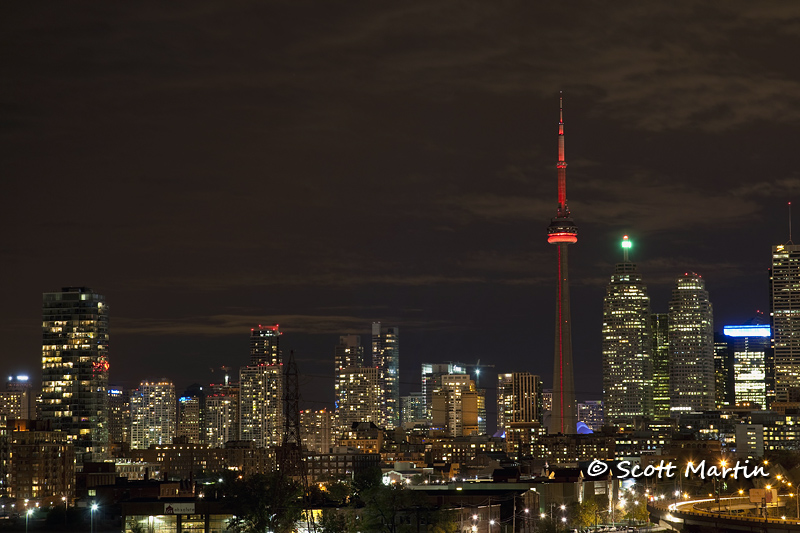
Thanks to Nuit Blanche the CN Tower is red!
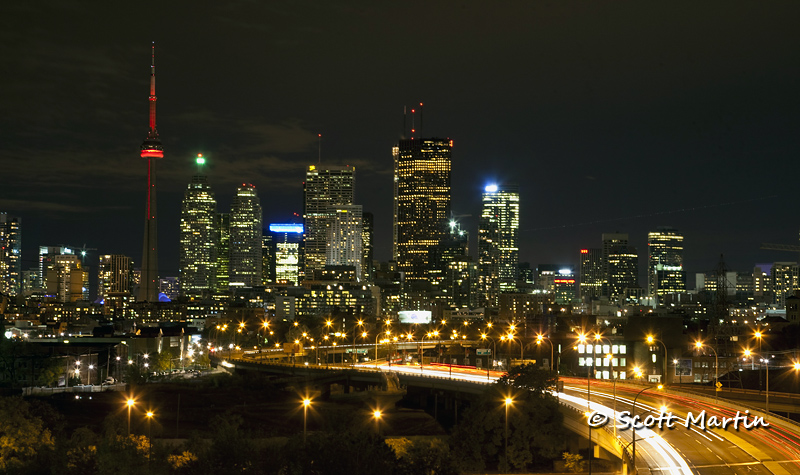
The star burst effect around the street lights is created by using a small aperture and as the aperture diameter increases the starburst effect is lost. You can also create the same effect with a star-cross filter, however that is more expensive and less fun than learning how to use aperture to control the star burst effect. The small apertures causes the exposure time required to increase significantly, however that is why you always have a tripod available.
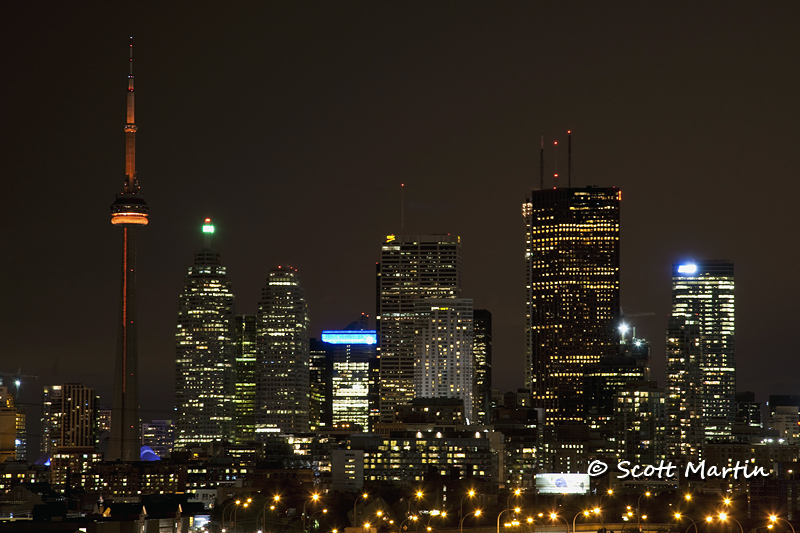
You can see other Cityscapes in the Cityscapes Gallery. There are some night shots of the Washington Capitol Building which will illustrate the value of shooting night scenes while there is still some blue in the sky.
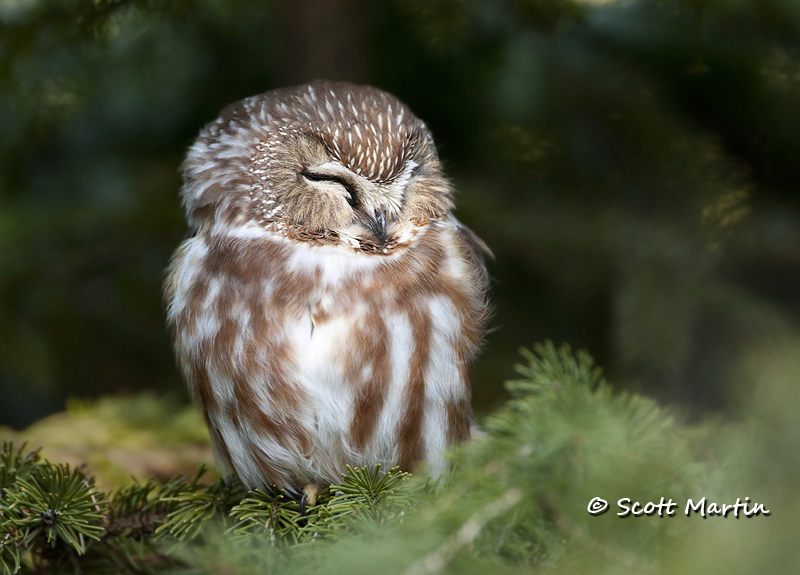
by Scott Martin Photography | Dec 3, 2010 | Blog, Raptors
Saturday was a great day to get out with the camera for a couple of hours and I was excited to find one of our smallest owls, the Northern Saw-Whet Owl whose scientific name is Aegolius acadicus. Acadicus is Latin for ‘from Acadia’ referring to the area in Canada where this little owl was first collected. Saw-Whets are quite small (20 cm in length) and very cute however they are aggressive hunters who although preferring voles & mice will also eat song birds, large insects and even amphibians. They often take more food than they can consume and store the extra in trees where it is frozen until needed. When hungry the Saw-Whet will ‘incubate’ the frozen food, just like it would an egg, to thaw it before eating.
Northern Saw-Whets are most commonly seen in South Eastern Ontario from October to early December and then again from February until mid-March. They are usually found relatively low down (6-12′) in heavily covered coniferous trees and almost always close to the trunk. For these reasons they are well hidden and its hard to spot them. From a photographic perspective they are usually very difficult to capture well because the view is normally obstructed and the light less than ideal.
Sleeping Beauty

.
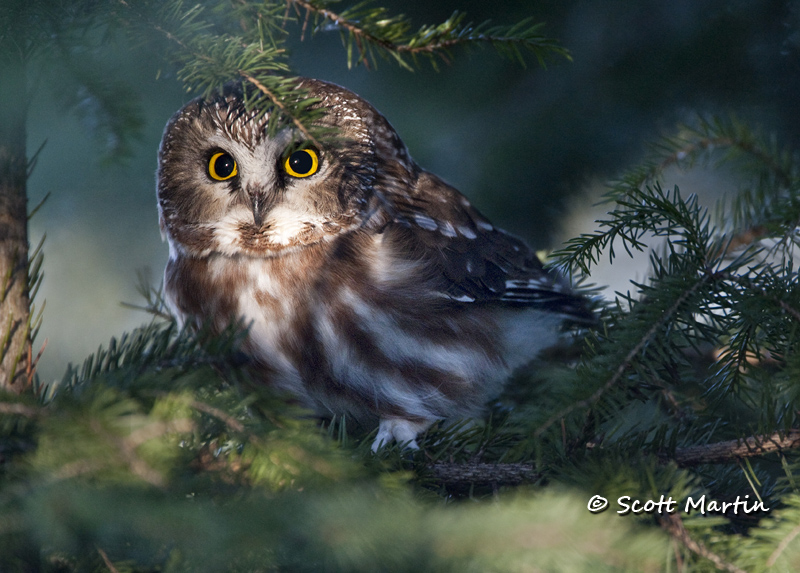
.
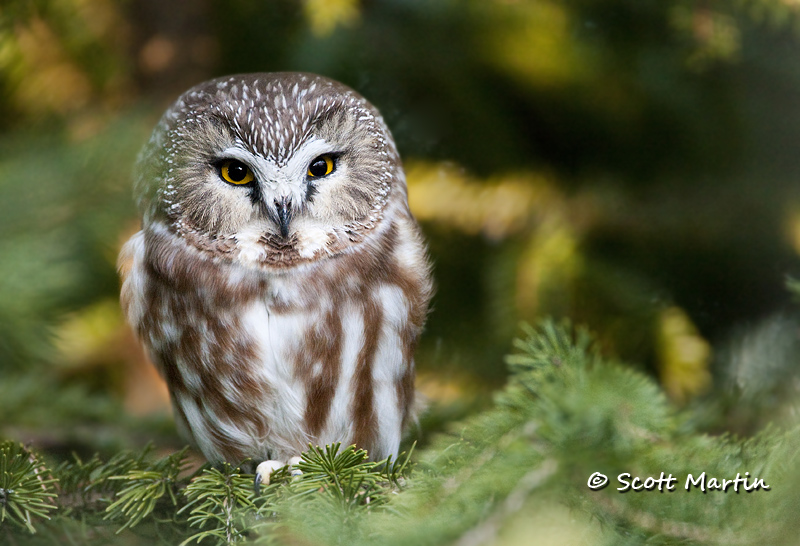
The next image is included to show how relatively large the feet & talons of the Saw-Whet are….an efficient hunter!
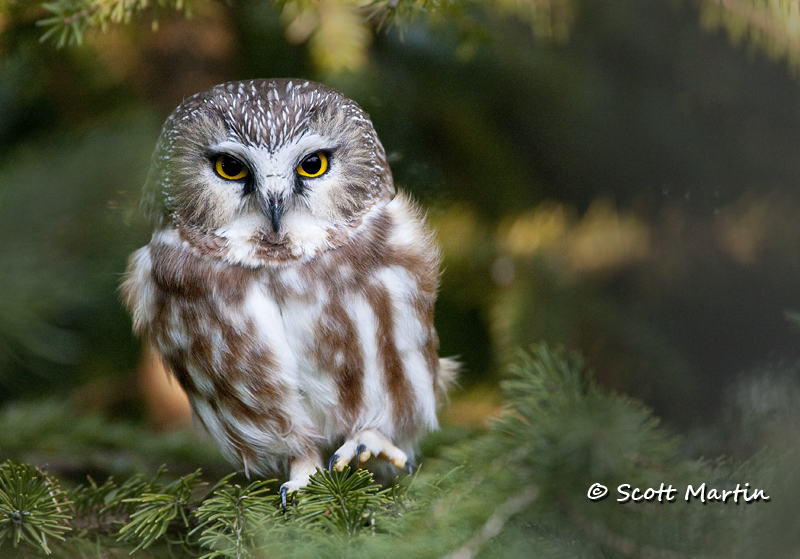
Owls cough up pellets that contain the indigestible parts of their prey (usually bones and fur or feather bits). I was fortunate enough to capture this Saw-Whet getting rid of a pellet.
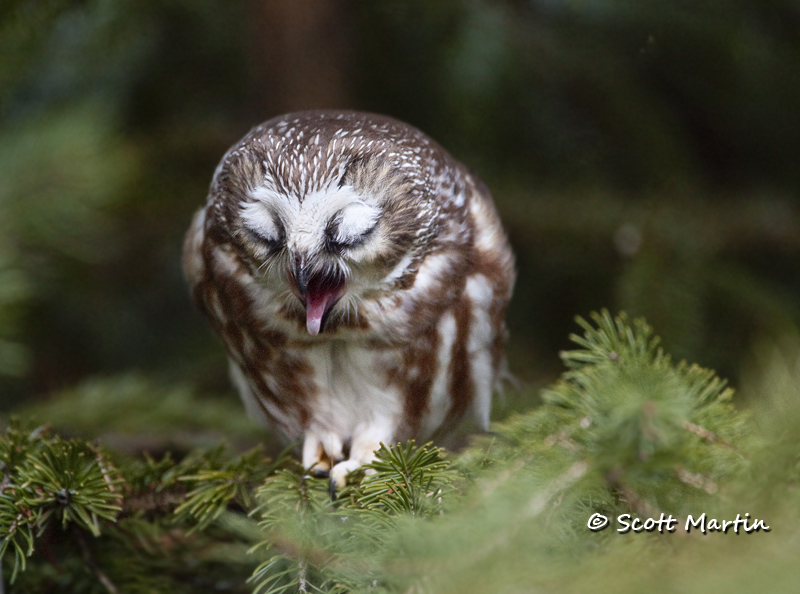
.
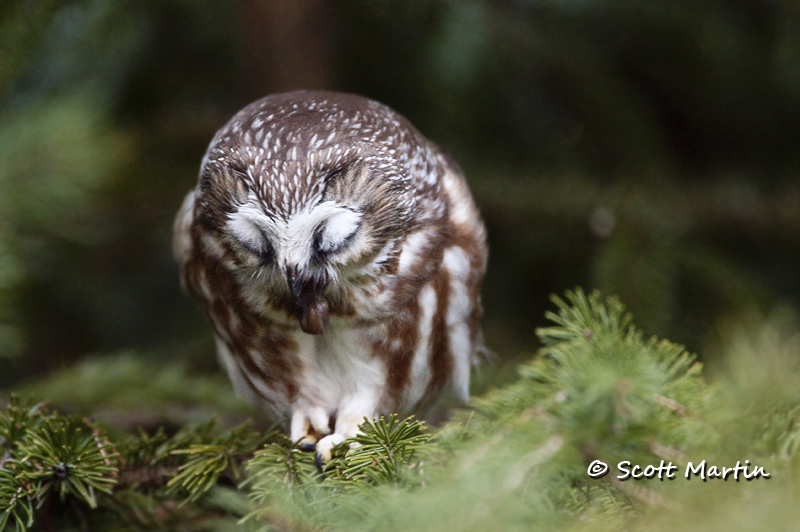
If you would like to see some more owls, you can find them in the Owl Gallery
Here are a couple of other birds from last Saturday, a Northern Cardinal and a Black Capped Chickadee.
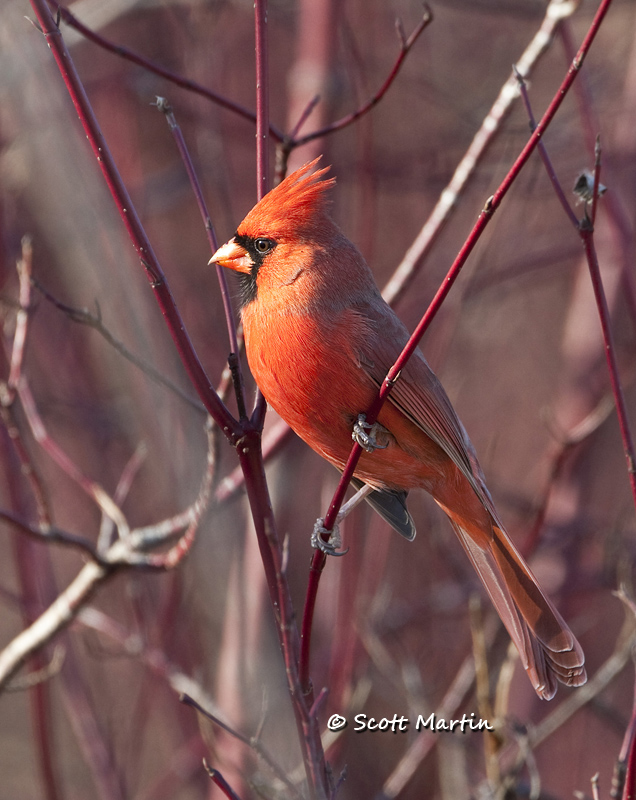
.
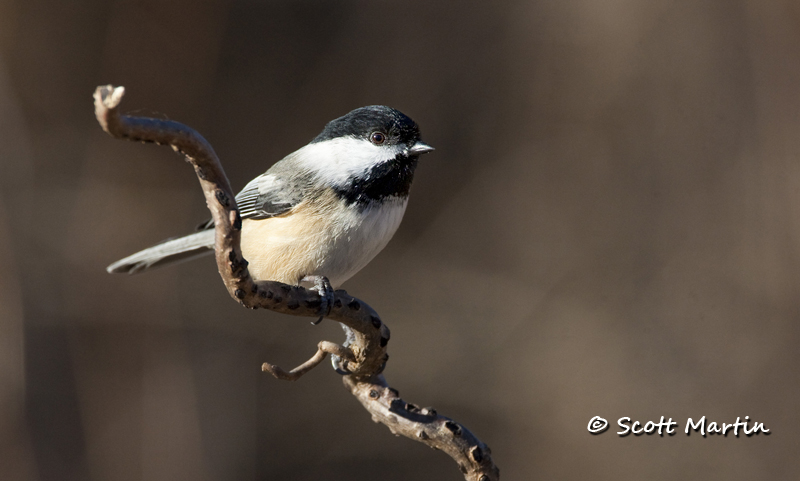
You can find more Cardinal images in the Sparrows, Grosbeaks, Buntings & Finches Gallery
More Chickadees can be seen in the Chickadees, Nuthatches & Creepers Gallery
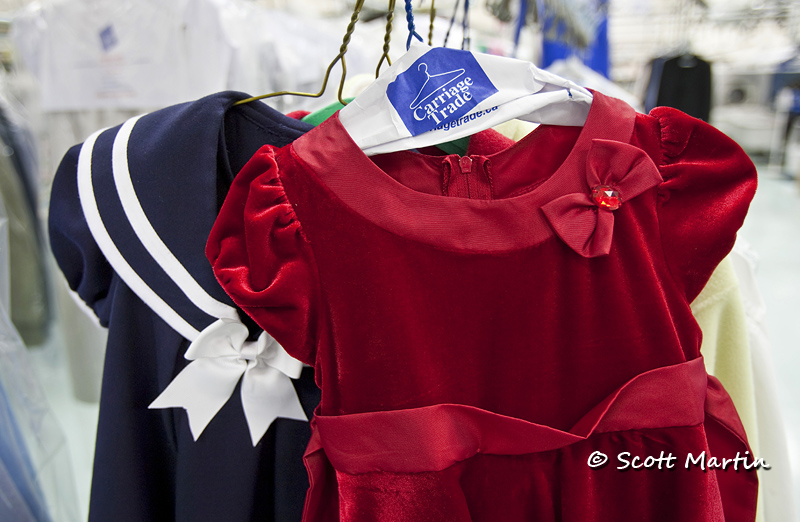
by Scott Martin Photography | Dec 1, 2010 | Blog, Commercial, General
About two weeks ago I was privileged to do a photo shoot for Carriage Trade Cleaning Centres and thought I would share a few of the images from that shoot. Carriage Trade is in the process of revamping their website and the purpose of the shoot was to generate images that would show best in a panoramic crop and be used as header and banner images on the new website. Although the images needed to illustrate the many facets of the cleaning centres it was also important to include the Carriage Trade branding as much as possible.
There are two Carriage Trade Cleaning Centres. The original facility opened on Simcoe Street North in Oshawa, Ontario in April 1982 and the second opened more recently in Courtice Ontario. Carriage Trade is a multi-generation family owned business that provides superior garment cleaning with value added services that are second to none, including 24 hour clothes drop off, drive through, complimentary minor garment repair and even a freshly ground cup of coffee brewed to your specification! They are also unique in that Carriage Trade Cleaning Centres are ‘wet’ cleaners using only water and natural detergents and cleaning agents that are 100% organic, mostly derived from citrus products. There are no chemicals used in the cleaning process so Carriage Trade is solvent free and entirely green in its operation. For years the typical ‘dry’ cleaners have used dangerous chemicals like PERC (tetrachloroethylene) to clean clothes, which is toxic to the environment and ironically doesn’t clean clothes as efficiently as the natural solvent free system used by Carriage Trade Cleaning Centres.
Carriage Trade Cleaning Centres are nationally and internationally recognized having received numerous community, industry and government awards. They also enjoy the distinction of being the first solvent free cleaning centre in North America.
I hope you enjoy this small sampling of images from Carriage Trade Cleaning Centres and if ever you are in need of any commercial photography please don’t hesitate to contact us as we would be glad to help.

.
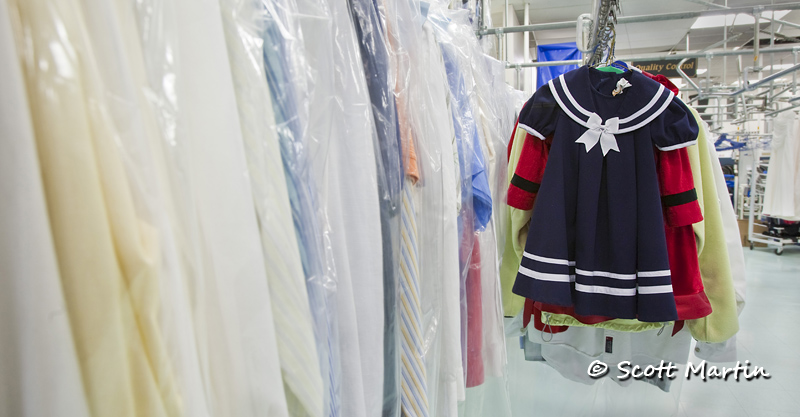
.

.

.
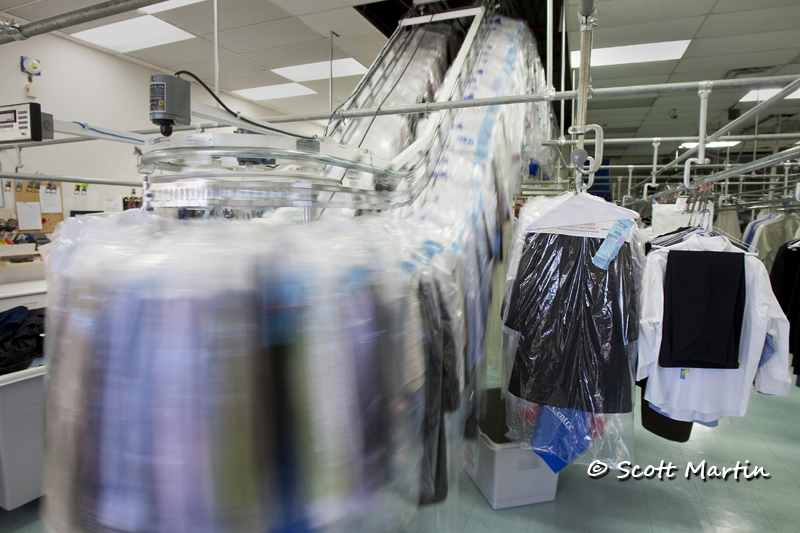
.
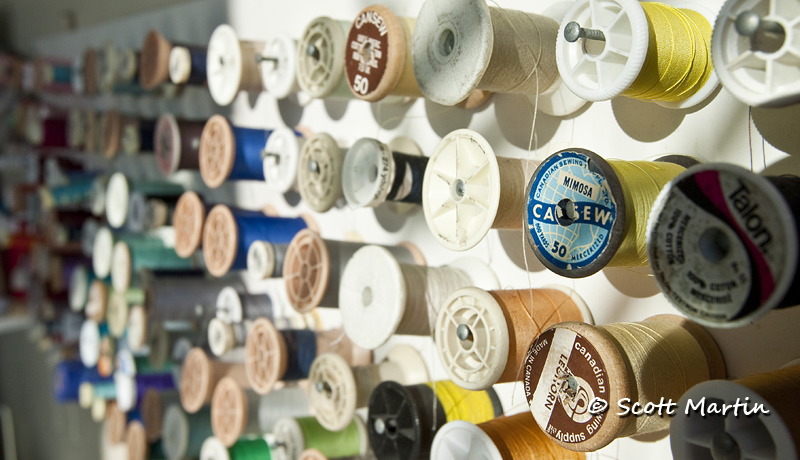
.
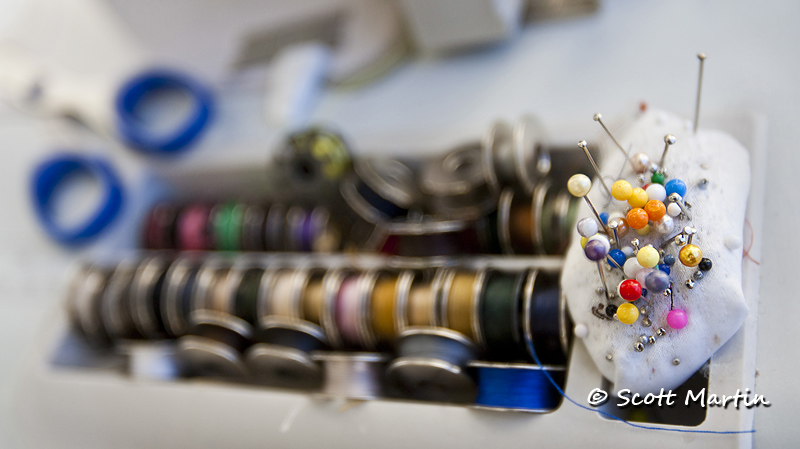
.

.

For all your cleaning needs in Oshawa or Clarington Ontario, Carriage Trade Cleaning Centres are simply the best.










































Follow Scott Martin Photography